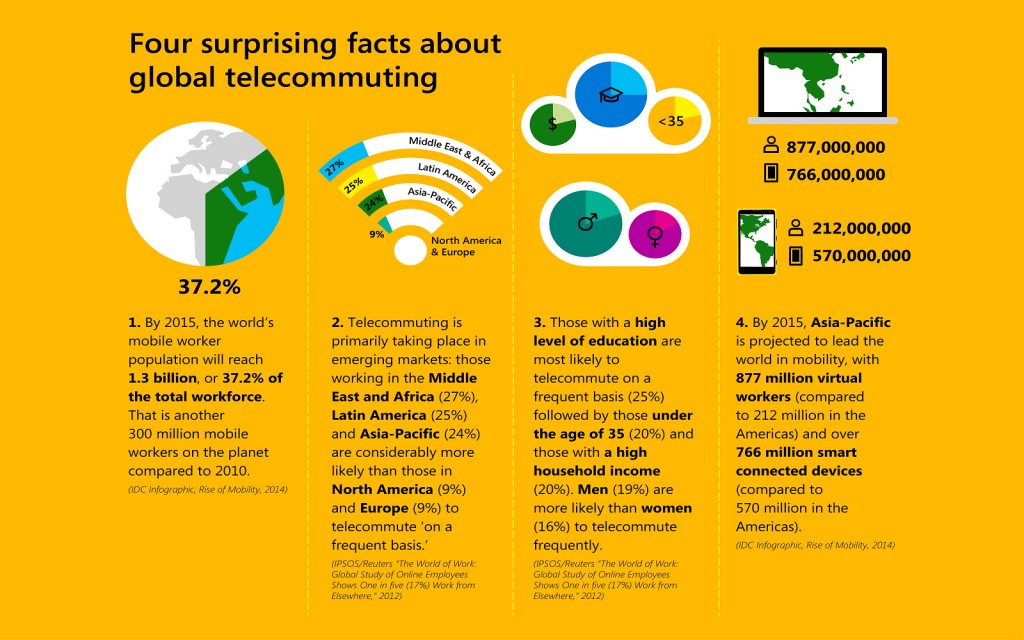
Remote working is an option that has been offered by more and more small businesses in recent years despite bosses harbouring some concerns regarding the productivity of home workers. Well now it seems employees should actually be checking that their telecommuters do not become overloaded.
Advances in remote working technologies, mobile data services and faster broadband connections have all enabled workers to operate successfully from home, remaining in contact with colleagues via networked computers and video conferencing. The big question has always been how easily employees can motivate themselves outside the work environment.
Microsoft knows that studies have found people who telecommute to be more productive and has produced an infographic to prove it. Click to enlarge the artwork below and discover four surprising facts about telecommuting, which may inspire you to reassess your own remote working policies.
By 2015, 37.2 per cent of the global workforce will be ‘mobile workers’, which equates to 1.3 billion people. This means that between 2010 and 2015, the mobile workers population will have grown by about 300 million.
Currently, telecommuting is a lot more commonplace in the Middle East and Africa rather than Europe and North America. Only nine per cent of Europeans and Americans work remotely, whereas 27 per cent of workers in the Middle East and Africa do the same. Latin America follows, with a quarter of its population classed as mobile workers, and 24 per cent of employees in the Asia-Pacific region work from home also.
Workers with a high level of education are the most likely type of person to telecommute, with a quarter of these people choosing to work from home. Perhaps unsurprisingly, younger employees are more keen on becoming mobile workers, as a fifth of under 35s currently telecommute. Moreover, a fifth of workers with a high household income also choose to stay at home, rather than come into the office every day.

